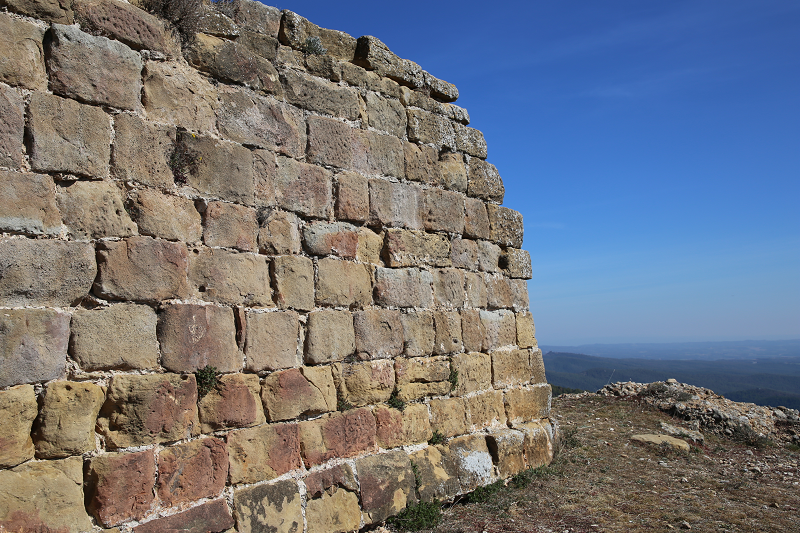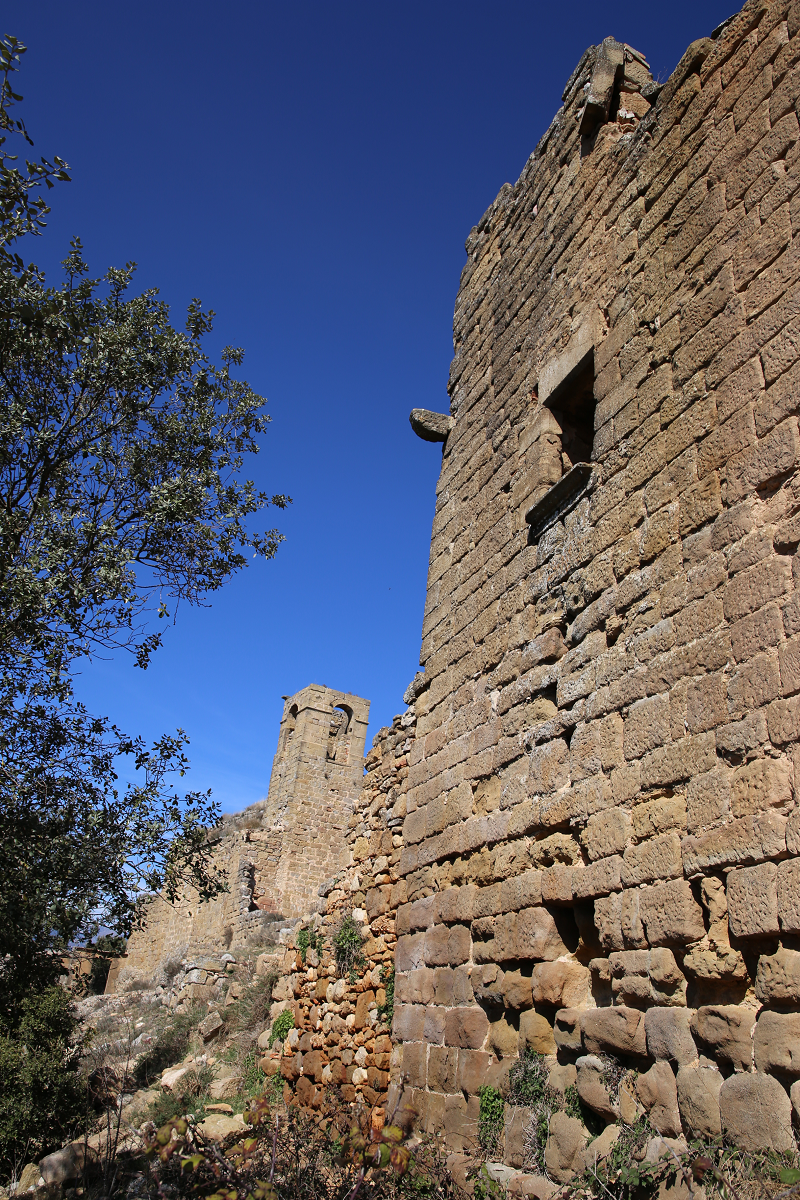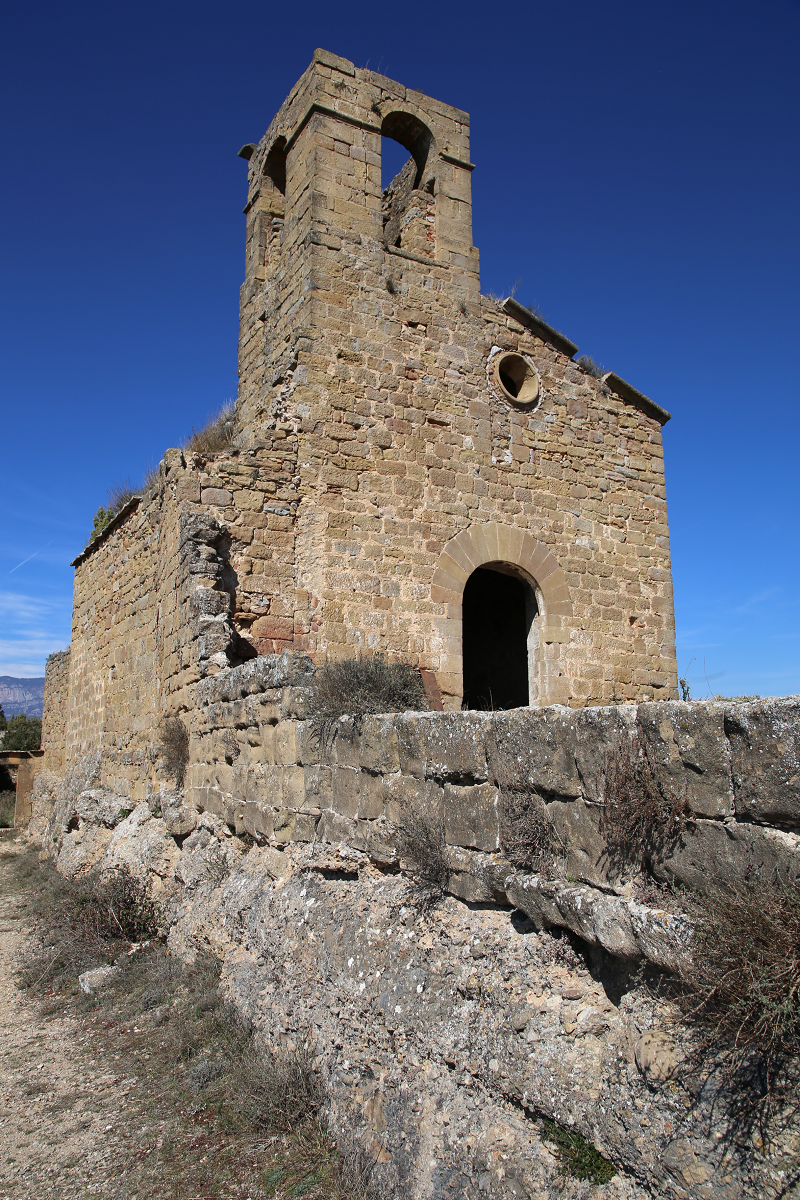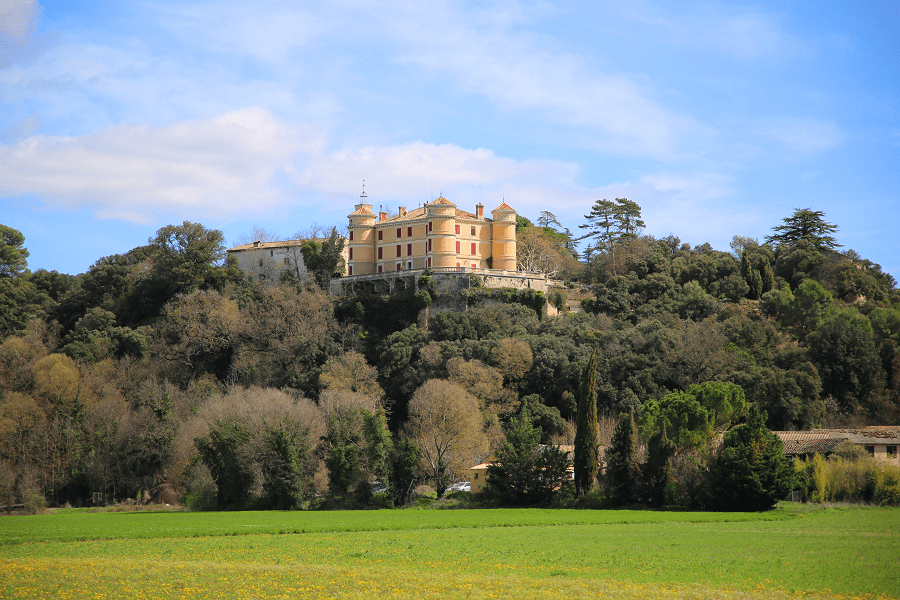Lladurs Castle (cat. El Castell de Lladurs) is located on the range Serrat del Castell in the municipality of Lladurs (Solsonès, Lleida province, Catalonia, Spain), next to the primitive Church of Sant Martí. It’s at the southeastern tip of the Riard plain, and on the east border of the municipal district of the same name, located on a slope on the right bank of the River Cardener. It is a monument declared a cultural asset of national interest.
History
The first written news of this castle is from the year 1000, when the Count of Urgell sold some vines located “in chastro Llaturci”. Through the act of consecration of Sant Sadurní de Tavèrnoles (Benedictine Abbey located in the municipality of Valls de Valira, Alt Urgell) we know that the castle was a property of the monastery together with the churches of Sant Martí and Sant Miquel, from the year 1040.
There are other documents from the 11th and 12th centuries where the castle appears in relation to land. In 1314, upon being included in the viscounty of Cardona, it appears as one of the castles which was under the lordship of Folc family, and remained such until the abolition of the feudal complex in the 19th century. It was included inside the viscounty, later county and finally duchy of Cardona, and it belonged to the bailiff of Solsona.
In 1762 a listing or creating of a capbreu began, a document that noted the acknowledgment made by the peasants to the lord rights. The document outlined the following borders of the castle: to the east Torrents, Vilanova d’Isanta and Olius; south: Solsona and Pallarès, west: Albets and La Llena and to the north Timoneda and Isanta.
Architecture
The castle ruins, with annexed buildings and extensions, can be assigned to different eras. It is difficult to distinguish what may be left from the Romanesque construction without prior excavation. The most modern part is in the north, in front of the church. At the south and east of the built-up area there are some walls with solid, well carved and arranged ashlars. A damaged, most likely central building, of which only the south and west walls remain, has an extension to the west of a rectangular floor plan with a height of about 7 m, an open door to the west and another one to the south. To the south of the central building there is another wall with a door. There is also a trapezoidal space that was probably divided into two areas. The oldest preserved walls date to the 13th or perhaps 14th century.
Legends
‘It is said that during the war, the soldiers, (a squad of liberals) full of anger, went up to the castle of Lladurs to kill his rector. He, seeing the troops arrive, walked to the edge of the cliff and firmly opening his shepherd umbrella (traditional large umbrella) hurried to the void to prevent them from taking him, and this way he was able to save his life.’
The story conveys the atmosphere of tension present in the Catalan mountain during the times of the Carlist wars, perpetuating its memory to this day.

















